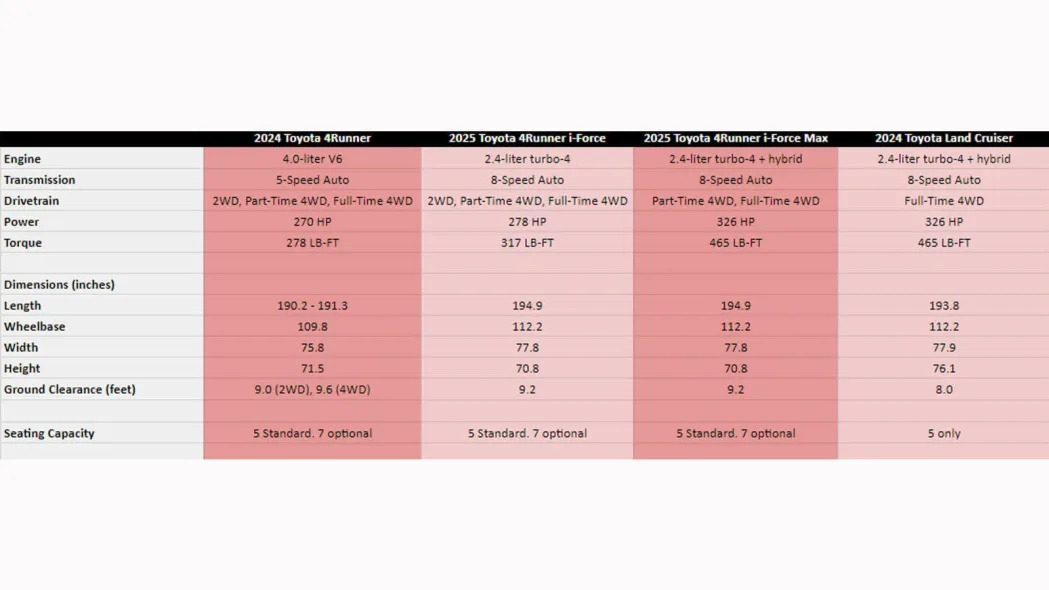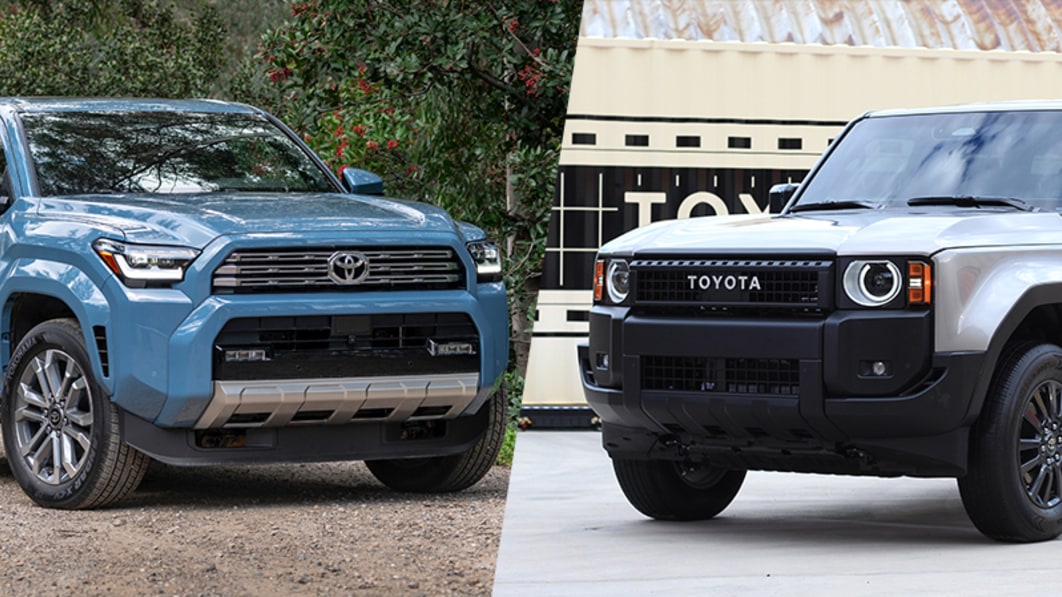When Toyota announced that the new Land Cruiser would be based on the smaller Prado variant and fit below the Sequoia, a key question arose: How will it compare with the new 4Runner? Now that the 2025 Toyota 4Runner has been revealed, we can begin to answer that question. However, it’s important to note that we may not fully grasp the answer at this stage.

We have compiled the numbers for the new 4Runner and the new Land Cruiser, as well as the old Toyota 4Runner for comparison. These figures are presented in a table above. Surprisingly, the 4Runner and Land Cruiser appear to be even closer in comparison than anticipated.
Notably, the wheelbase and width are nearly identical (with the Land Cruiser being only slightly wider). The length is also quite similar, with the 4Runner being only 1.1 inches longer than the Land Cruiser.
Even more intriguing is that the 4Runner exceeds the Land Cruiser in two key aspects crucial for off-road use. It boasts 1.2 inches more ground clearance (in the standard models) and is almost half a foot shorter in overall height compared to the Land Cruiser. Additionally, the 4Runner offers an optional third-row bench, while the Land Cruiser is strictly a two-row model.
Furthermore, there is minimal difference in terms of powertrain. While the standard 4Runner comes with a non-hybrid turbo four-cylinder engine with lower power and torque, the optional Hybrid Max powertrain matches the Land Cruiser with 326 horsepower and 465 pound-feet of torque. Both models feature four-wheel-drive, although certain versions of the 4Runner will have selectable four-wheel drive-only (no full-time setting).
A distinguishing version of the Land Cruiser with a Lexus badge is the GX. This model, a more luxurious counterpart to the Land Cruiser, offers a third-row option and a twin-turbo V6 engine that delivers significantly more power than the Land Cruiser. Although it comes at a higher cost, the engine performance, features, and seating arrangements set it apart. On the other hand, the Land Cruiser boasts a retro aesthetic appeal. The 4Runner, inspired by the Tacoma, also enjoys a modern design that pays homage to its origins.
It is evident that the new 4Runner improves upon its predecessor in various aspects when analyzing specifications. The base turbo four-cylinder engine generates 8 more horsepower and 39 more pound-feet of torque compared to the outdated 4.0-liter V6. Moreover, the new version’s transmission offers three additional gears, likely enhancing fuel efficiency. The hybrid variant is expected to provide a substantial increase in performance as well.
Based on our experience with the Tacoma, we anticipate that the new four-cylinder engine, even without extra gears, will be a significant improvement overall. With increased torque, quick turbo response, and modern features, the standard engine in the new 4Runner is likely to outperform its predecessor in every aspect.
The new 4Runner is also longer in length and wheelbase by over 3 inches, and wider by 2 inches compared to the previous model. Although this may not enhance off-road capabilities, it should improve interior space and usability. Hopefully, these changes will positively impact the third-row seats, which were notably cramped in the old model.
There are still several details to be revealed such as fuel economy and pricing for the new 4Runner. However, improvements in mileage are expected, and the price is likely to be lower than that of the Land Cruiser. The pricing comparison between the Hybrid Max version and the Land Cruiser will be intriguing. Stay tuned to Autoblog for more information on these aspects.
Source link
